Episode 0: Welcome To Mangasplaining!

Welcome to Mangasplaining, the manga podcast! In this first episode you’ll get to know the team including Deb Aoki, David Brothers, Christopher Butcher, and Chip Zdarsky. We’ll also talk about the dark secret of the podcast… getting Chip to read manga, and hopefully you read along with him, enjoy some great books, and maybe learn a little something along the way.

Show notes:
00:00: Welcome to Mangasplaining, the manga podcast for people who want to read great manga!
00:50: We introduce the crew, Deb Aoki, Chip Zdarsky, David Brothers, and Christopher Butcher.
03:15: The secret of this new Manga Podcast, Revealed!
04:55: David, Deb, and Chris reveal their secret manga origins.
06:33: about.com was a website which strove to be a complete cultural repository on the early internet, with ‘guides’ writing articles and answering questions for website visitors. Deb Aoki was the Guide for manga.about.com for years.
06:52: Nakayoshi magazine is an important shoujo manga (girls’ comics) magazine published by Kodansha, which originally serialized Naoko Takeuchi’s Sailor Moon.
08:00: Look we mention a LOT of titles off-hand when we’re talking, and we can’t gloss them all, but if something’s directly relevant to the conversation we’ll do so. 😊
09:51: American comics creator Frank Miller, who wrote and drew the ‘definitive’ Daredevil stories, was hugely influenced by the manga Lone Wolf and Cub, created by Kazuo Koike and Goseki Kojima, currently in print from Dark Horse Comics. It was Miller’s fandom of the series that contributed to it being published in North America in the 1980s by Marvel comics, and Miller contributed cover art to the single-issue editions of the series.
10:29: Fables of the Green Forest was a 1973 Japanese anime that ran internationally, dubbed into English and French among many other languages, in the late 1970s and into the 1980s in syndication. The Japanese title is “Yama Nezumi Rokkii Chakku” or, literally, “Rocky Chuck the Mountain Rat.” It’s a story about woodland creators and their trials and tribulations. You can find episodes on Youtube. The theme song still haunts Christopher’s dreams.
12:00: Before the internet people traded physical VHS tapes filled with anime through the mail. It’s kind of why fansubbing and ‘pirating’ wasn’t a big deal, it would take you 8 years to amass as much work as you can torrent/pirate in 3 days, now. It’s a different world, support legal sites, folks.
15:13: Rumiko Takahashi gets mentioned again here, with her works Ranma ½ and Maison Ikkoku. Takahashi is a huge creator in Japan, and foundational in the west. We’ll review our first Rumiko Takahashi manga on Episode 03.
16:30: Chip isn’t joking here: Lone Wolf & Cub can be a very imposing series to start reading, weighing in at over 8700 pages of manga stories, and that’s before you factor in the prequel or sequel(s). It’s currently being reprinted in omnibus format by Dark Horse Comics, and that’ll probably run 10-12 volumes.
18:05: Vertigo was a hugely influential comics imprint from DC Comics, aimed at Mature Readers, and headed by Editor Karen Berger. It got pretty goth. Notable titles included Sandman, Hellblazer, and The Doom Patrol.
19:40: Sailor Moon: Cultural Phenomenon.
20:05: Force Five was a North American repackaging of 5 different Toei giant robot anime produced in the mid 1970s. Mazinger was _supposed_ to be part of the Force Five block but was swapped out for Starzinger. We also mention Battle of the Planets, known in Japan as Science Nina Team Gatchaman, another hugely influential 1970s anime.
22:10: Batman: The Animated Series is The GOAT. Since recording they’ve announced a reboot of the series will debut in the future.
26:30: Deb’s mentions Takehiko Inoue’s Vagabond here, an awesome samurai series. It is highly recommended by the podcast, but it’s a real long series so we may or may not officially cover it at some point.
27:40: When the crew was in Japan we took in a manga art show featuring Hajime no Ippo, created by George Morikawa. Collected in 129 volumes and ongoing since 1989, the manga is sadly not available in North America, but the anime is.
29:30: Deb mentioned Attack on Titan by Hajime Isayama, One Piece by Eichiro Oda, and Haikyu! by Haruichi Furudate.
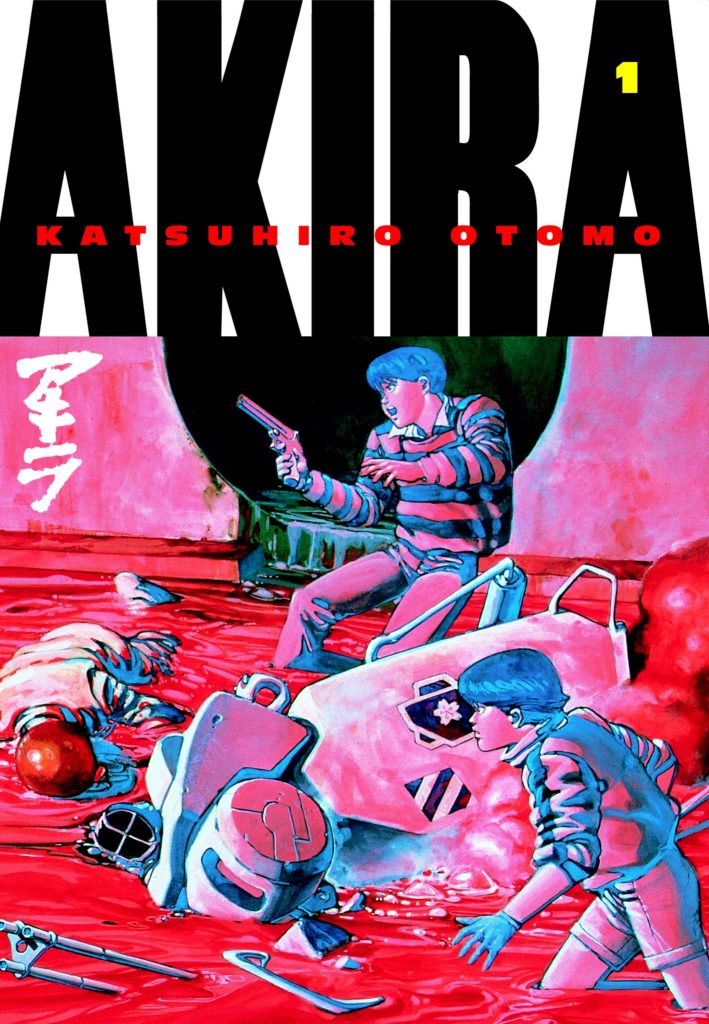
31:00: So, here it is! The first manga we’re going to officially discuss on Mangasplaining: Akira, by Katsuhiro Otomo. It’s worth noting that we’re going to cover volume 1. We’ll get more into the series, the anime, and its impact in the next episode, so we’re not gonna go super-in-depth here. We’re really excited to be starting this new manga podcast for fans of the medium and newcomers alike! Thanks so much for joining us here. We’ll dig into the first volume in the next podcast.
32:45: Death: The High Cost of Living was a miniseries spinning off of The Sandman, published by Vertigo.
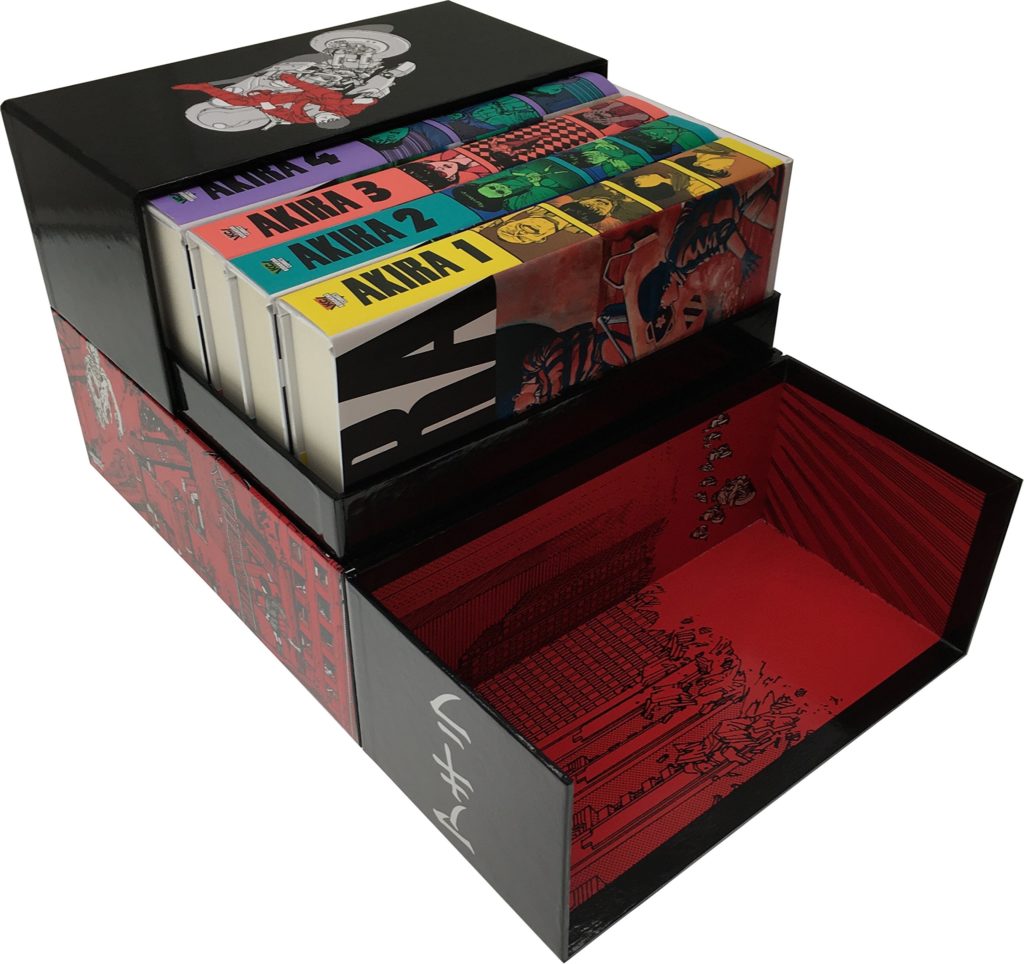
35:50: Deb is lifting the insane heavy hardcover box set of Akira recently released by Kodansha. It weighs 10kg/22 pounds. There’s a new printing currently available, and there’s also less-heavy, slightly cheaper softcovers available.
38:00: Akira was published in the 90s by Marvel, in colour, and noted colourist Steve Oliff worked directly with creator Katsuhiro Otomo and coloured the series. The original hand-coloured guides were sold for very cheap at a few conventions, before getting priced way up and sold online. Marvel’s colour edition is out of print, and the Kodansha editions in English are all in the original black and white.
42:10: Dave Gibbons. /facepalm
44:20: So yeah, in Japan, they generally read from right to left. In the west, we generally read from left to right. When manga was originally brought to North America, the manga was ‘flipped’ to appear to read in the western orientation, and Akira was flipped. The first ‘unflipped’ version of Akira was the box-set edition recently released in hardcover. Also, because it’s been flipped, the Japanese sound effects would be backwards, so they are edited out of the work, and replaced with English (or roman letter) sound effects. The new edition of Akira also preserves the Japanese sound effects.
45:30: Éditions Glénat, publishers of literally thousands of books, including the French language translations of Akira.
46:00 : Domu: A Child’s Dream is a stand alone manga graphic novel by Katsuhiro Otomo, released just prior to Akira in 1983. It was translated into English and published by Dark Horse. The last English edition was published in 2001, but when it went out of print Otomo-sensei did not allow it to be reprinted, and is has remained out of print ever since. It fetches a VERY high price on the secondary market.
48:22: From Domu: A Child’s Dream, by Katsuhiro Otomo:
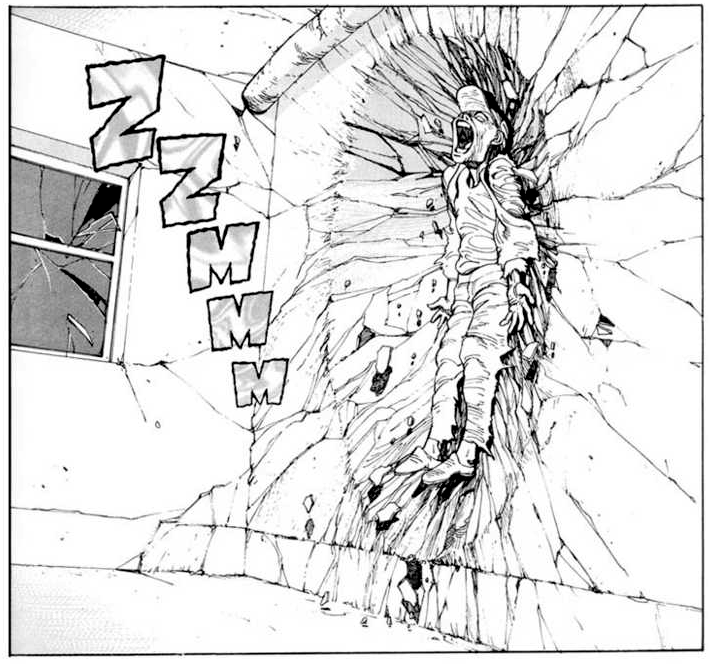
49:28: The Incal, by Alejandro Jodorowski and Moebius (aka Jean Girard). Seminal, foundational French science fiction comic book series. Currently in print in one volume from Humanoids, along with a prequel and sequel.
52:40: Deb Aoki just appeared in a video on the VIZ channel talking about the manga Fangirl volume 1, by Sam Maggs and Gabi Nam, based on the novel by Rainbow Rowell. Here’s a link: https://www.youtube.com/watch?v=_NNZqAtK3wY
53:17: Chip Zdarsky’s Sex Criminals (with Matt Fraction) is available to pre-order wherever books are sold. Stillwater (with Ramon Perez) is in comic book stores everywhere. Batman’s not that hard to find, you can find Batman. Check your local comic shop! Comicshoplocator.com.
54:25: David Brothers is not editing the Fist of the North Star manga, coming this summer from VIZ, but he is a huge fan. He does edit Jojo’s Bizarre Adventure and Hell’s Paradise: Jigokuraku.
56:35: The series Christopher mentions is Zoshi no Zuikara: The Frog in the Well Does Not Know The Ocean, by Satsuki Yoshino, being published by Yen Press. It’s a real chill slice-of-life manga about creativity and making manga, by the creator of Barakamon. 2 volumes available now.
58:00: We just can’t stop talking about manga.
59:20: Those links again are:
Comicshoplocator.com
mangasplaining.com
Thanks to D.A.D.S. for the music!
And thank you for listening!
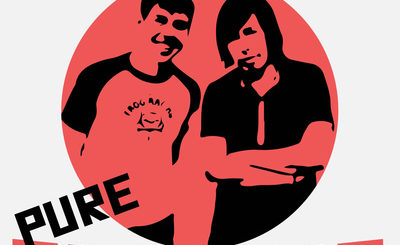
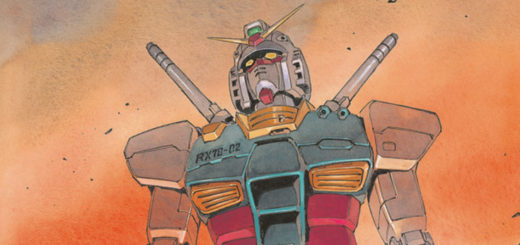

Hey, great podcast! Glad I stumbled across it.
One correction to these show notes: the first English Lone Wolf and Cub translations were from First Comics, not Marvel.